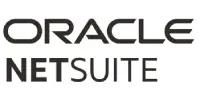
Bridging the gap between ERPs and AP processes can be tedious and confusing. Cut out the confusion and streamline processes today.
To decide whether Sage Intacct or NetSuite, owned by Oracle, is the better SaaS, true cloud-based ERP system for your business, consider your unique business needs. Both software solutions provide modern design with an intuitive user interface and capabilities for global multi-entity and multi-currency businesses.
This comparison guide points out the functionality and key differences between NetSuite and Sage Intacct.
Sage Intacct vs. Oracle NetSuite
Both Sage Intacct and NetSuite target medium-sized companies. These ERP systems have thousands of global customers ranging from small businesses to publicly-traded and enterprise companies. NetSuite offers a special ERP package called NetSuite Small Business.
Consider Sage Intacct or NetSuite if your business is moving up from an entry-level or small business QuickBooks accounting system, which doesn’t have the scalability or functionality to accommodate the complexity and number of users for rapid business growth.
Sage Intacct is the only accounting software endorsed by the AICPA, the U.S. professional association for Certified Public Accountants in the U.S. That endorsement means that Sage Intacct can handle accounting requirements for generally accepted accounting principles (GAAP). Advanced Sage Intacct functions include revenue recognition and subscription billing.
Sage Intacct is unique because it’s designed with modern Dimensions tagging for accounting. Your business can easily generate reports with dimensions as different filters and group them. Your company can shorten its chart of accounts compared to other ERP systems and accounting software because Dimensions don’t require account coding.
Both Sage Intacct and NetSuite offer real-time reports and dashboards powered by AI business intelligence, providing meaningful insights to manage your business effectively.
Sage Intacct and NetSuite serve commercial businesses, nonprofits, and government customers. They each provide industry-specific software solutions.
What is Sage Intacct?
Sage Intacct is SaaS true cloud software with core financials (accounting software for financial management), budgeting and planning, and human resources (HR) and payroll products.
Sage Intacct’s core financials include:
- Accounts receivable
- Accounts payable
- Cash management
- Intelligent general ledger
- Purchasing
- Order management
The Sage Intacct accounting solution capabilities include invoicing, fixed assets accounting, project accounting, inventory management, allocations, revenue recognition, subscription billing, real-time custom reports, and dashboards with KPIs. The inventory management software includes warehouse management at multiple locations.
Sage Intacct works with hundreds of third-party add-on software API integrations to increase its functionality, including advanced global payments and AP automation software. Sage Intacct has a special partnership with Salesforce to integrate its CRM and chat functions for collaboration within the Sage Intacct ERP. Sage Intacct has partnered and third-party manufacturing software functionality. And Sage Intacct has third-party ecommerce integrations.
The open architecture of Sage Intacct also lets your company build its own applications. One example is Sage Intacct customer c3controls improving its ecommerce capabilities for customers using the Sage Intacct platform.
Sage Intacct offers training and implementation services, with services provided by Sage Intacct or its value added reseller (VAR) partner network. Sage Intacct includes a knowledge base as part of its customer support.
Benefits of Sage Intacct
Sage Intacct provides multi-dimensionality through Dimensions to easily increase visibility views from different angles from drop-down selections in reports. With advanced features, Sage Intacct offers best-in-class accounting software that can help you achieve your GAAP reporting objectives while saving you time.
The eight default Sage Intacct dimensions are:
- Location
- Department
- Vendor
- Customer
- Employee
- Project
- Item
- Class
If these default dimension names don’t fit your organization, you may be able to rename them to other dimensions, giving you added flexibility.
Sage Intacct includes advanced software for subscription billing and SaaS metrics features for its users. Intacct handles revenue recognition and allocations well. For added functionality, Sage Intacct handles hybrid billing from at least two subscription or billing methods.
Sage Intacct has an Intelligent General Ledger, using AI and making the review of your extensive business transactions easy. Real-time posting of transactions is possible. Sage Intacct has built-in outlier detection driven by artificial intelligence. It lets you use defaults and set up custom screening parameters for outlier definitions for General Ledger transactions and Contract Renewal.
With Sage Intacct, your business can automate the consolidation of entities like subsidiaries, properly account for partial or minority ownership, and automate inter-company transaction eliminations in the consolidation process.
In 2020, Sage Intacct added AI-driven Sage Intelligent Time as its time tracking solution.
What is NetSuite?
NetSuite is a real-time true cloud ERP (enterprise resource planning) with modules (suites) to manage business processes throughout the business organization with an integrated database. NetSuite provides its own CRM for customer relationship management or integrates with Salesforce. NetSuite ERP also offers revenue recognition software.
With its NetSuite OneWorld product module for global business management, Oracle NetSuite handles accounting (including multi-currency) for multi-national entities in over 200 countries and consolidation exceptionally well.
NetSuite business software products include:
- ERP
- Accounting software
- Global business management
- CRM
- Human capital management
- Professional services automation (PSA)
- Omnichannel commerce
- Analytics, including Business intelligence
- Experience
- SuiteSuccess
- Platform
NetSuite ERP includes:
- Financial management
- Financial planning
- Order management
- Procurement
- Production management
- Supply chain management
- Warehouse & fulfillment
NetSuite accounting software includes:
- Billing
- Finance & accounting
- Financial planning
- Financial reporting
- Global consolidation
- Governance, risk & compliance
- Revenue recognition
NetSuite professional services automation includes:
- Analytics
- Billing
- Expense management
- Project accounting
- Project management
- Resource management
- Timesheet management
The NetSuite Experience product includes:
- Document management
- Mobile
- Role-based authentication
- User interface
- User dashboard customization
NetSuite Planning and Budgeting, an add-on module, includes:
- Budgeting and forecasting
- Scenario planning and modeling
- Revenue planning
- Operational expense
- Workplace planning
- Trended financial statements
- Data synchronization
- Dashboards
- Microsoft Office integration
NetSuite SuiteSuccess offers turnkey implementation and training, workflows, best practices, and KPIs for many industries already built-in, and a choice of optional modules based on business needs.
Benefits of NetSuite
NetSuite is a fully-featured ERP system that includes all you’ll need as add-on modules but still lets you integrate with best-in-class CRM software from Salesforce instead of its CRM module. Like Sage Intacct, it provides real-time business intelligence dashboards with useful KPIs and useful business reports.
Sage Intacct vs. NetSuite Comparison
To compare Intacct vs NetSuite, consider an external G2 comparison guide and the following table based on our Internet research review. Some of these features are advanced options available at an additional cost.
| Feature |  |  |
|---|---|---|
Cloud-based | Yes – true cloud
| Yes – true cloud
|
Mobile app (iOS and Android)
| Yes | Yes |
Maximum number of users
| No maximum number of users
| No maximum number of users
|
Invoice templates
| Yes | Yes |
Consolidation | Yes, with multi-entity and multi-currency
| Yes, with multi-entity and multi-currency
|
Industry-specific editions | Yes | Yes |
Multi-language | Yes | Yes, customers in 200+ countries
|
Calculate discounts by customer
| Yes | Yes |
Inventory tracking and inventory management
| Yes | Yes |
Project tracking and job costing
| Yes | Yes |
Time tracking
| Yes, Sage Intelligent Time, using artificial intelligence, introduced in 2020
| Yes |
Multicurrency
| Yes | Yes |
Automated recurring payments collection
| Yes | Yes |
Cash flow forecasting using artificial intelligence (AI)
| No, but offered through certified third-party partner add-on software
| Yes |
Bank account reconciliations
| Yes | Yes |
Customer support
| Yes, Sage Intacct offers 24-hour support for Monday through Friday in North America, UK, Australia, and South Africa or online Sage Intacct Community discussions anytime
| Yes, NetSuite offers three customer service plan options, with up to 24/7 customer support in many countries and languages
|
Automatic data-encrypted backups and feature updates
| Yes | Yes |
Restore company files with data
| Yes | Yes |
Business Planning and Forecasting
| Yes | Yes |
Accountant version for CPAs and bookkeepers
| Yes | Yes |
Third-party or cloud-based add-on apps
| Yes | Yes |
Gartner Magic Quadrant
| Yes, named Visionary
| Yes, named Visionary and Leader, with a high ability to execute
|
Used by IPO and public companies
| Yes | Yes, 65 of the most recent 100 tech IPOs use NetSuite |
Payroll | Yes | Yes |
Which ERP is Best for Your Business?
Either NetSuite or Sage Intacct may meet the needs of your small or mid-market company. Both ERP systems have some large and publicly-traded companies as customers. Sage Intacct and NetSuite offer scalability for business growth.
Both NetSuite and Sage Intacct offer industry-specific solutions and use AI/ML technologies with business intelligence to drive their software. Both software solutions are real-time and cloud-based.
Consider your company-specific immediate and future business needs when evaluating Intacct vs. NetSuite and choosing an ERP system.